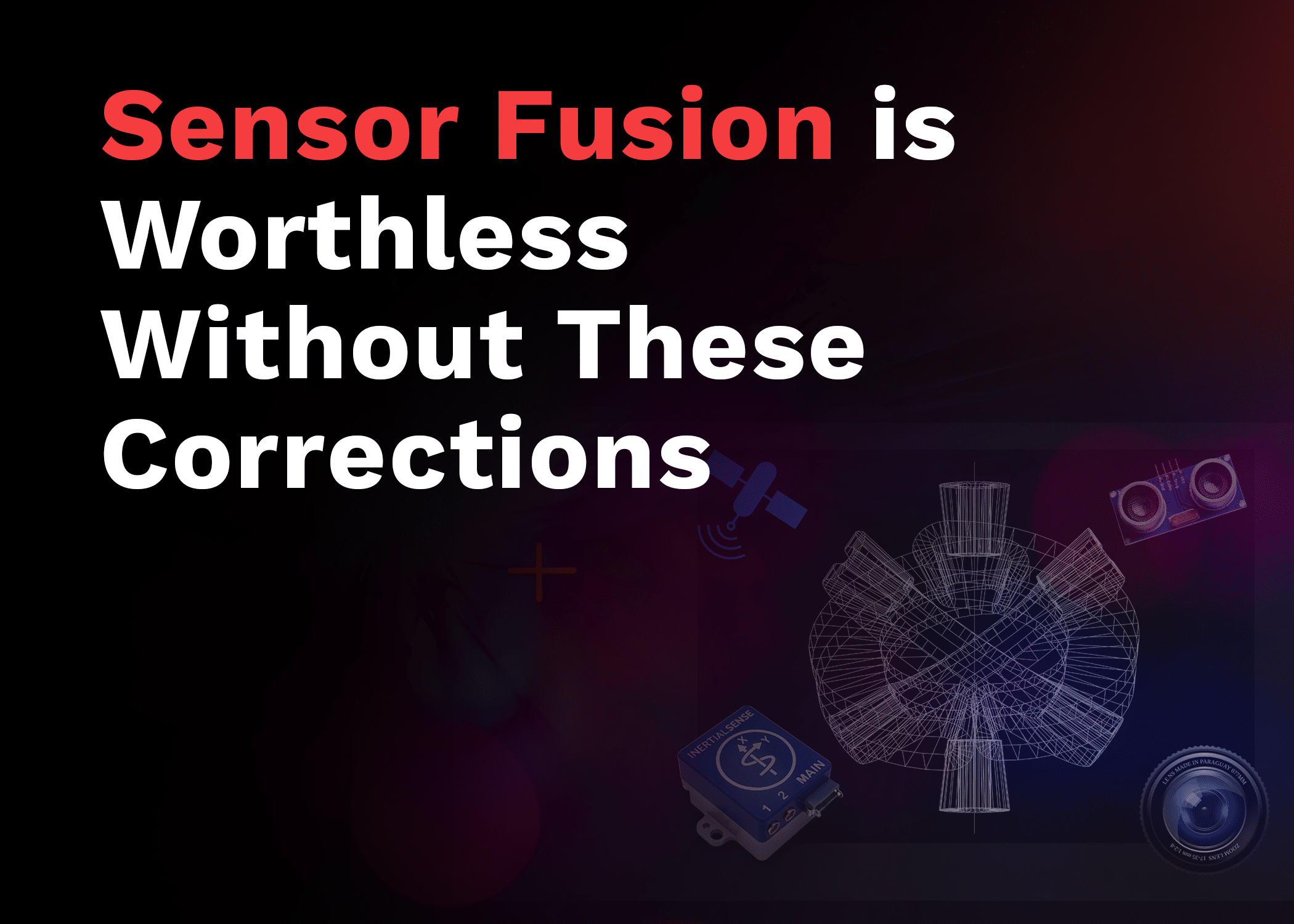
Sensor Fusion is Worthless Without These Corrections
Sensor fusion is the combining of data from multiple sensors to reach a consensus on position and momentum reducing uncertainty and error in autonomous navigation and robotics systems, using GNSS receivers, Kalman filters, and other options. These sensor fusion corrections are necessary to provide increased accuracy, especially where data interference can be strong. Failing to provide corrections like these can result in worthless positional readings and less accurate navigational directions from your systems. Here are a few proven corrective strategies that can boost accuracy and utility for your sensor fusion systems in real-world applications.
Sensor Fusion Through Additional GNSS Receivers
In most cases, navigation systems will already have a GPS in place, and in some situations, two will be necessary. Why add another GPS to your rover or autonomous system? In general, the addition of a second GPS device can provide added information for your sensor fusion data. This can allow cross-checking and verification for the information obtained from other sensors and can increase the accuracy of sensor fusion data reducing errors to a considerable degree.
Establishing redundancy can allow robots and systems that employ autonomous navigation to collect more data and to achieve a higher degree of accuracy in determining the system’s location, which can be of critical importance for vehicles and other systems in real-world scenarios. An additional GPS to form a GNSS receiver can often identify large errors in location plotting that could otherwise affect the performance of your robots and autonomous rovers to a significant degree.
Calculating Displacement To Provide Corrections
An article published in the scientific journal Sensors indicates that calculating the displacement of objects in motion via multiple sensors and sensor types is an excellent way to achieve accurate sensor fusion corrections for navigational autonomy. A mathematical algorithm is used to compare and filter the displacement data to determine location based on direction, speed, and acceleration. These figures produced can be used to verify the information provided by other sensors, including GPS.
By adding these software solutions to the navigational hardware systems, locational data can be obtained more precisely. In general, navigational autonomy is determined by comparing information from a wide range of sensors and tools. Displacement calculators offer added help in assessing which competing sensor readings are most likely to be accurate and reliable.
Determining Sensor Fusion Corrections by Approximation via Kalman Filtering
In November 2019, the Communications of the ACM published an article on the basics of Kalman filtering as a means of improving accuracy in autonomous navigation and other applications. According to the article, Kalman filtering can be seen as an “approach to combining approximations of an unknown value to produce a better approximation.” In other words, Kalman filters “clean up” and smooth raw positional data from multiple sensors to provide more clear insight into where a vehicle is at.
Kalman filters are one of the most effective ways of making corrections to sensor fusion data. By comparing notes, in essence, these filters can eliminate outlier data to promote a more accurate reading for rovers and autonomous vehicles similar to how a “low pass” or “high pass” filter might clean up audio input from a mic. Kalman filters and other filters that are used in sensor fusion corrections and adjustments.
Adding More Sensors
One common tactic to avoid generating worthless sensor fusion data is simply to add many more sensors to the mix. While this may be a good idea, in theory, adding sensors without a clear plan in place to integrate them coherently with other sensors can be a big mistake. This can be especially true for inertial measurement units or IMUs. Purchasing IMU sensors could potentially end up losing you money without achieving significant added accuracy. Understanding what the addition of more sensors will mean for processing times and accuracy is absolutely essential to ensure that you are not wasting money for little or no return.
To achieve positive sensor fusion results, you may wish to enlist the help of a company with extensive experience in the autonomous navigation environment. Inertial Sense can provide you with guidance on the best ways to improve accuracy in a cost-effective and practical manner. This can help your company to avoid spending money uselessly and can resolve the problem of worthless fusion data in your rovers, drones, and other autonomous systems.
At Inertial Sense, we know that achieving autonomy for your robotics systems and vehicles can be challenging. We offer practical solutions that increase precision and achieve autonomy more effectively in a wide range of real-world scenarios. Give us a call today at 1-801-406-3163 or contact one of our autonomous navigation experts through our website. At Inertial Sense, we deliver autonomy and precision for a world in motion.
Learn More:
Everything You Need To Know About Global Navigation Satellite System Units (GNSS)

